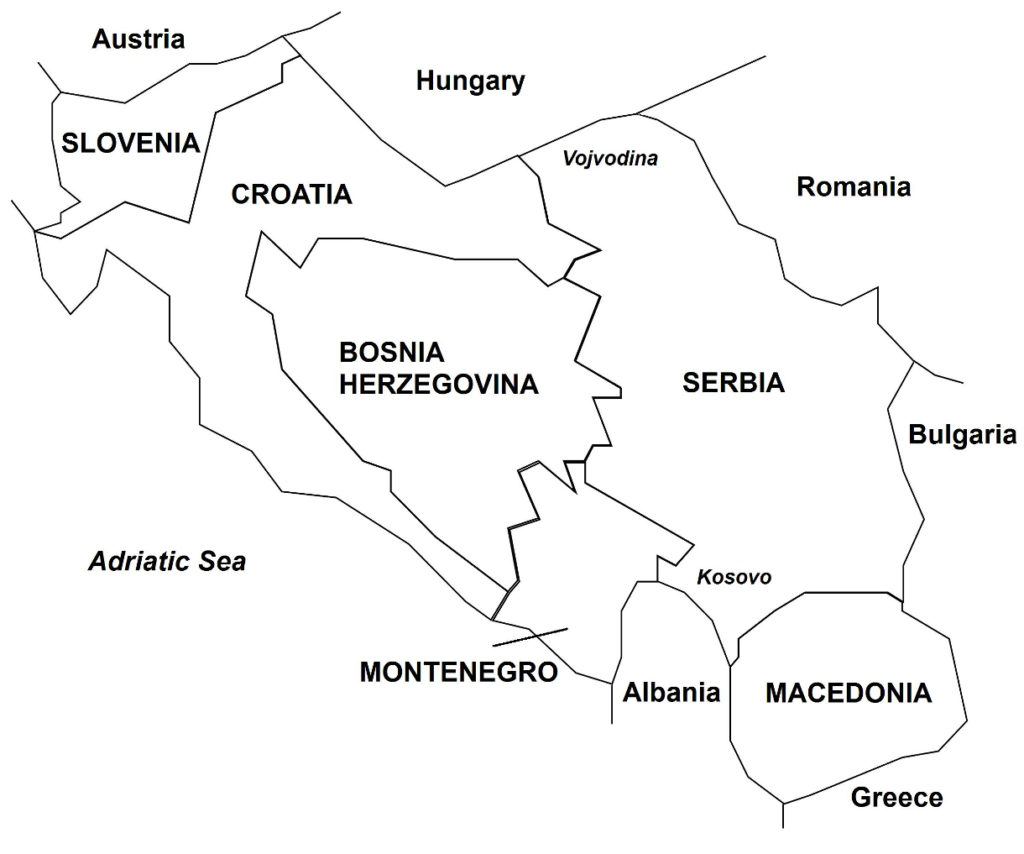In early 1994, with another Bosnian Serb general offensive looming, Bosniaks and Bosnian Croats found common ground. With the urging of the United States, on February 23, 1994, Bosniaks and Bosnian Croats formed a unified government under the “Federation of Bosnia and Herzegovina”. The Bosnian War shifted to fighting between the combined Bosniak-Bosnian Croat forces against the Bosnian Serb Army.
In early 1994, Bosnian Serb forces laid siege to Sarajevo, Bosnia’s capital, relentlessly pounding the city with heavy artillery and inflicting heavy civilian casualties. The siege of the capital drew international condemnation, with the United Nations (UN) and the North Atlantic Treaty Organization (NATO) becoming increasingly involved in the war. NATO declared Bosnia-Herzegovina a no-fly zone. On February 28, 1994, NATO warplanes downed four Serbian aircraft over Banja Luka.
Under a UN threat of a NATO airstrike, Bosnian Serbs were forced to lift the siege on Maglaj; supply convoys thus were able to reach the city by land, the first time in nearly ten months. In April 1994, NATO warplanes attacked Bosnian Serb forces that were threatening a UN-protected area in Gorazde. Later that month, a Danish contingent of the UN forces engaged Bosnian Serb Army units in the village of Kalesija. The NATO air strikes, which greatly contributed to ending the war, were conducted in coordination with the UN humanitarian and peacekeeping forces in Bosnia-Herzegovina.

(Taken from Bosnian War – Wars of the 20th Century – Volume 1)
Bosnia-Herzegovina has three main ethnic groups: Bosniaks (Bosnian Muslims), comprising 44% of the population, Bosnian Serbs, with 32%, and Bosnian Croats, with 17%. Slovenia and Croatia declared their independences in June 1991. On October 15, 1991, the Bosnian parliament declared the independence of Bosnia-Herzegovina, with Bosnian Serb delegates boycotting the session in protest. Then acting on a request from both the Bosnian parliament and the Bosnian Serb leadership, a European Economic Community arbitration commission gave its opinion, on January 11, 1992, that Bosnia-Herzegovina’s independence cannot be recognized, since no referendum on independence had taken place.
Bosnian Serbs formed a majority in Bosnia’s northern regions. On January 5, 1992, Bosnian Serbs seceded from Bosnia-Herzegovina and established their own country. Bosnian Croats, who also comprised a sizable minority, had earlier (on November 18, 1991) seceded from Bosnia-Herzegovina by declaring their own independence. Bosnia-Herzegovina, therefore, fragmented into three republics, formed along ethnic lines.
Furthermore, in March 1991, Serbia and Croatia, two Yugoslav constituent republics located on either side of Bosnia-Herzegovina, secretly agreed to annex portions of Bosnia-Herzegovina that contained a majority population of ethnic Serbians and ethnic Croatians. This agreement, later re-affirmed by Serbians and Croatians in a second meeting in May 1992, was intended to avoid armed conflict between them. By this time, heightened tensions among the three ethnic groups were leading to open hostilities.
Mediators from Britain and Portugal made a final attempt to avert war, eventually succeeding in convincing Bosniaks, Bosnian Serbs, and Bosnian Croats to agree to share political power in a decentralized government. Just ten days later, however, the Bosnian government reversed its decision and rejected the agreement after taking issue with some of its provisions.
